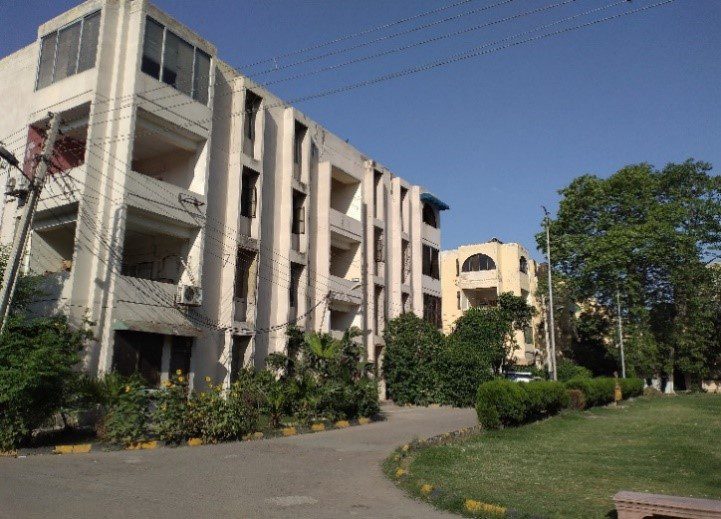How Vertical Living is Redefining Urban Spaces in Pakistan

Introduction
As Pakistan’s cities continue to expand and urban populations grow, the concept of vertical living—once reserved for only the elite—is now becoming a practical and increasingly popular housing solution. High-rise apartments are reshaping the urban skyline, offering sustainable, space-efficient, and community-oriented living alternatives. Projects like Falaknaz Greens, One Beverly, and The Mega Mall reflect this vertical transformation in Pakistan’s real estate landscape.
The Urban Housing Crisis and the Vertical Response
Pakistan’s urban centers face mounting pressure due to rural-urban migration, rapid population growth, and the scarcity of land in city centers. With limited horizontal expansion possible, especially in key metropolitan zones, vertical development has emerged as the most viable alternative.
Vertical living maximizes limited land resources by building upwards instead of outwards, enabling developers to provide more housing units without compromising essential infrastructure and green spaces.
Benefits of Vertical Living
Space Optimization
High-rise buildings allow cities to accommodate more residents in smaller footprints. This leads to efficient land use and helps prevent urban sprawl.Modern Amenities
Many vertical developments include state-of-the-art amenities such as:Rooftop gardens
Gyms and pools
Community halls
Secure parking
Backup power and water
One Beverly, for example, integrates lifestyle-enhancing facilities like smart elevators, fitness studios, and panoramic rooftop lounges—transforming the concept of city life into a complete luxury experience.
Cost-Effective Maintenance
Shared infrastructure, utilities, and security make vertical living more cost-efficient for residents compared to maintaining independent houses.Security and Safety
With features like controlled access, surveillance systems, and round-the-clock security personnel, vertical communities offer enhanced safety—a key concern for urban families.
Lifestyle Appeal for the Modern Urbanite
High-rise living offers more than just convenience—it offers a curated lifestyle. Young professionals, small families, and retirees are increasingly drawn to apartments that support:
Proximity to workplaces
Easy access to shopping, education, and healthcare
Community events and recreational options
The Mega Mall, with its blend of retail, commercial, and residential zones, creates a dynamic live-work-play environment that caters to the evolving needs of Pakistan’s urban middle class.
Environmental and Sustainability Impact
Vertical developments support sustainable urbanization by:
Reducing urban sprawl and preserving green belts
Promoting mass transit accessibility
Lowering per capita energy consumption
Encouraging centralized waste management systems
Falaknaz Greens, with its eco-conscious design and resource-efficient architecture, exemplifies the blend of vertical housing and sustainable principles.
Moreover, vertical communities often use green building materials, solar energy solutions, and rainwater harvesting techniques—making them an ideal option for environmentally responsible living.
Addressing Common Concerns
While vertical living brings many benefits, some potential residents worry about:
Lack of privacy
Limited outdoor space
Noise between units
Modern designs and engineering practices have addressed these issues with:
Soundproofing measures
Private balconies
Landscaped communal areas
Intelligent floor plans that prioritize space and privacy
One Beverly ensures every resident experiences luxury and tranquility, even in a high-density vertical setup.
Investment Opportunities in Vertical Projects
As demand for urban housing grows, vertical developments present strong investment opportunities. Key benefits include:
High rental yields
Steady appreciation in value
Low vacancy risks due to demand
Whether it’s an apartment in The Mega Mall with instant commercial access or a high-end unit in One Beverly, investors are realizing the potential of vertical real estate as a secure and profitable asset class.
Government and Policy Support
Recognizing the need for vertical growth, government authorities and city planners are encouraging vertical projects through:
Zoning law revisions
Incentives for high-rise developments
Encouragement of mixed-use and smart housing projects
This policy shift is helping vertical living become the norm rather than the exception, especially in land-scarce urban environments.
Vertical Living as the Future of Urban Pakistan
The shift toward high-rise developments isn’t just a real estate trend—it’s a necessary step in reshaping the urban future of Pakistan. With increasing urbanization, vertical housing is essential to:
Accommodate growing populations
Protect environmental assets
Create livable, connected, and modern communities
As vertical living becomes mainstream, developers like those behind Falaknaz Greens, One Beverly, and The Mega Mall are leading the transformation by offering modern, secure, and aesthetically pleasing residences tailored to the urban Pakistani lifestyle.
Final Thoughts
Vertical living is no longer a luxury or novelty—it’s a necessity for Pakistan’s urban centers. As land becomes scarce and city infrastructure is stretched thin, the only sustainable path forward lies in building upward.
Projects like Falaknaz Greens, One Beverly, and The Mega Mall represent the forefront of this vertical revolution, offering a glimpse into the future of smart, efficient, and sustainable urban living.
Investing in these developments means becoming part of a larger shift—toward communities that are safer, greener, and more attuned to the needs of modern residents.


